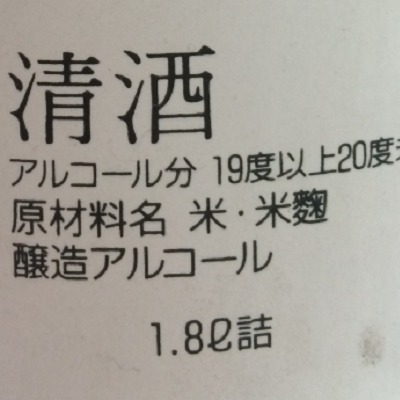We decided that it was about time we sat down and hashed it out over something that is becoming an increasingly divisive topic in the sake world: to aruten or not to aruten? That is the question that
John,
little Chris,
big Chris, and
Justin pose to one another, as well as our listeners, in this week’s surprise release of Sake On Air.
For those unfamiliar with the concept, both junmai and aruten likely appear to be nothing more than drunken gibberish. However, to anyone trying to discern what’s inside (or rather, not inside) a bottle of sake, this is important vocabulary.
“
Aruten” is Japanese industry slang for sake which has had what is often translated as “brewer’s alcohol”, which is added to sake in some (many!) cases. It can also refer to the related process of adding such alcohol to a bottle of sake. While by no means necessary in order to craft a delicious fermented rice beverage, motivations for adding this somewhat ambiguous alcohol can range from anything as simple cost-cutting, to calculated and crafted usage leading to extremely high-end, carefully nuanced sake production. As reasons for aruten’s existence and prevalence very much run the gamut of motivations, it’s challenging to shuffle it into any one specific camp, or explain it in simple terms of “good” vs. “evil”. Aruten sake would include daiginjo and ginjo (without the word “junmai” attached), as well as honjozo and futsu-shu styles.
“
Junmai”, then, translated literally as, “pure rice”, is exactly what you might expect: sake that has not had any brewer’s alcohol added in any form, or in other words, has not received the “aruten treatment”. Originally, any and all sake produced was junmai. However, times change, as do brewers’ ambitions and the market’s tastes and perceptions. There’s a rather significant “all junmai” push from both inside and outside the industry, as of late. The reasons for that, however, are actually more varied and complicated than you might think.
As regular consumers and extreme foodies alike increasingly (and rightfully) demand more transparency in relation to food and beverage, the industry is up against further pressure to openly communicate not only “what” is inside a bottle of sake, but also justify “why” it ought to be there in the first place.
In a world where views and opinions feel like they’re becoming increasingly polarized, we set out to do our best in order to give both junmai and aruten a fair shake, going to bat for both parties in (hopefully) equal form. In this episode, the goal isn’t to provide our listeners with “the answer”, but the information to help everyone make more informed decisions for themselves.
Are you in the “junmai camp”? The “aruten camp”? Or maybe just the plain old, “love for sake camp”? Hopefully this week we can help you to spread the sake love wherever it is your inspirations and preferences may guide you.
As always, thanks to both our dedicated followers and new listeners that make it all possible. If you’d like to
leave us a kind review, our love for you will flourish all the more. We can’t begin to tell you how much that helps.
If you have any thoughts about the show, feedback, questions or show ideas, feel free to contact us at
questions@sakeonair.staba.jp
Please do follow along with us (@sakeonair) via
Instagram,
Twitter and
Facebook, as well. We try to send out some lovely photos and thoughtful words here and there in order to satiate those thirsty for more sake-related insight in between episode releases.
A big thanks (as always) to the amazing
Frank Walter for bringing us to life each and every round.
Sake On Air is made possible with the generous support of the
Japan Sake and Shochu Makers Association and is a joint production between
Potts.K Productions and
Export Japan.
Kampai!
Our theme is “Younger Today Than Tomorrow” composed by
forSomethingNew for Sake On Air.









